Alongside today’s announcement of the new Forerunner 945 LTE, Garmin has also refreshed its least expensive running watch – the Forerunner 55. This watch is aimed at folks that don’t need all the fancier features of a higher-end Forerunner 245, 745, or 945 series – but still want the core of the run tracking. Of course, as each successive series comes out, these so-called basic running watches get more and more features that ultimately make them far more feature-capable than the last iteration of the mid-range watches.
The Forerunner 55 has gained the majority of the features that came to the FR245 last time around, including running track mode (for perfect GPS lines at the track), daily suggested workouts, women’s health tracking, PacePro (this is huge), Recovery Time, now full Connect IQ support, and plenty more. Seriously, it’s almost a mini-FR245 now. Except $100 cheaper. True, the FR245 does have a handful of performance-oriented features, but very few unique ones remain at this point.
I’ve been using the Forerunner 55 for a number of weeks now on workouts and 24×7 wear. Additionally, my wife has also used the FR55 on a number of her workouts too. So I’ve got a pretty good feel on how well the FR55 works, and where its quirks are.
Note that for this review I’m using a media loaner from Garmin. Once this review is done, I’ll get it boxed back up and sent back to them. After which I’ll likely go out and buy my own for future use. If you found this review useful, you can use the links at the bottom, or consider becoming a DCR Supporter which makes the site ad-free, while also getting access to a mostly weekly video series behind the scenes of the DCR Cave. And of course, it makes you awesome.
With that, let’s get into it.
What’s New:

While all the attention today is on the new LTE capabilities of the just-launched FR945 LTE, the real attention should be on the FR55 and the slate of new features it gets. None of these are ‘new’ to Garmin, but rather, new to this price point. For runners, getting PacePro and Track Run mode specifically are huge. Let alone the Recovery Time and Daily Suggested Workouts. It’s impressive.
Here’s the full bulleted list of changes:
– Added PacePro (dynamic course-based pacing for races)
– Added Daily Suggested Workouts (basically gives you custom running workouts each day based on training/recovery)
– Added Track mode (makes perfect track workout GPS maps, as well as perfect distance/pacing)
– Added Virtual Run mode (used on treadmills, to broadcast your pace/heart rate via Bluetooth & ANT+)
– Added Finish Time Estimator (predicts finish for a given distance)
– Added Predicated Race Times (shows 5K/10K/Half-marathon/Marathon times based on performance)
– Added Women’s Health Tracking (allows on-watch entry/tracking for menstrual cycle and pregnancy)
– Added Recovery Time (hours)
– Added more sport modes including pool swimming and HIIT
– Added Connect IQ support for data fields, widgets, and apps (previously only had CIQ watch faces)
– Added 24×7 respiration rate tracking and widget (outside of workouts)
– Added customizable lap banners
– Added customizable auto pause thresholds
– Switched to widget glances, versus full size widgets (now matching other Garmin watches)
– Increased standby battery life from 1 to 2 weeks in smartwatch mode
– Increased GPS battery life from 13 hours to 20 hours
– Increased from 3 data fields to 4 data fields per page, plus two more custom pages (and you can customize defaults)
– No more 45/45S split-size differentiator, just one size (42mm with the same 26mm screen).
– Price remains same at $199USD
There’s so many big-ticket items in here. PacePro and Track Mode are huge for many runners, but things like Connect IQ data fields means you can use this with Stryd for example, for running power. And then beyond that, every day I use the watch I find all sorts of tiny little features that have changed, things that were rolled down from the FR245, but also from the FR745/945 too. Mostly minor menu option type stuff, but for someone out there, this will be *THE* feature that pushes them over the edge. For others, they won’t care. I’m sure there’s plenty more I haven’t found or realized yet, so I’ll add them above as I spot them.
Note the FR55 is available in black, white, or aqua. As you’ve probably deduced by now, the version you see in this review is aqua. And yes, this 6’2” very male frame has been rockin’ that in public the last few weeks. Look, after wearing that small purple Lily watch, it’s gonna be hard to phase me.
With that, let’s start using it.
The Basics:
To begin, the FR55 differs from something like the Venu or Vivoactive series in that it’s got plenty of buttons, as opposed to a touchscreen. There’s no touchscreen here – and frankly, I’m totally good with that. Easier access to quickly iterate through menus or options while on the run. There’s two buttons on the right, and three more on the left. They do as they’re labeled, allowing you to confirm/escape/up/down/light easily.
That said, if I were to have one complaint about the Forerunner 55 it’s that the display is feeling a bit aged these days. Sure, by itself you probably wouldn’t notice, but when you’re testing side by side the Forerunner 745 or 945LTE, you can easily see the pixilation on the numbers, and it just feels like it’s one iteration overdue for a refresh. The smaller digits just feel 1990’s. I get that Garmin makes the trade-off here in bringing this price point lower by using cheaper displays, but it’s time Garmin, it’s time.
Still, despite my disappointment with the screen, the watch functions perfectly fine and viewable as a sport watch, even if a touch slow in occasional non-time-sensitive places (like the final saving of a run). There’s never any issues with readability or clarity, because they aren’t having to make brightness tradeoffs here to save battery power. Also, the screen is always-on, all the time. Again, no battery tradeoffs to make.
When it comes to watch faces, you can tweak a number of the stock watch faces on the unit itself, customizing some of the data on the screen. Or, you can simply download any of the gazillions of watch faces from Garmin Connect IQ (their app platform), all of which are free.
Or, you can even customize a watch-face with your own photos of friends or kittens or whatever the case may be. Your choice.
While the Forerunner 45 had Connect IQ watch face support, the Forerunner 55 extends that to other Connect IQ app types, including data fields, apps, and widgets. In fact, later in the sport section I hook up the Stryd running power meter Connect IQ data field to show that. Note that if you’re reading this today, it can sometimes take a bit of time (days to weeks) for developers to validate their apps are valid on a given watch. This is one area where Garmin really needs to re-think how this works (for all watches), as many times developers don’t come back and check-off new watches as compatible, even if they’re entirely compatible and it’s just a minor model-name shift. Just in the same way Apple doesn’t require app developers re-validate apps are compatible for every new phone the day its released – instead, it’s based on the underlying markers.
In any event, geekiness aside, let’s talk some of the basics of data tracking. First up is that as we scroll down in the menus we’ve got widgets – or rather, widget glances. These are smaller glanceable snippets than the full size widgets in the past. And then if you want more data you can tap into them to expand them.
If we crack open the steps tracked one for example, we’ll see that the user interface is changed – now matching that of the recently released Garmin Venu 2/2S, which is a much cleaner and more stylized look. You can tap to see details like steps over the last week (distance or straight steps):
And then all of this data is of course synced to Garmin Connect via your phone (or, computer if you plug it in). So on Garmin Connect Mobile (that’s the phone app) you’ll get the same data, but you can slice and dice it a gazillion ways, looking at more the analytics side of it.
The majority of the default widgets are health and fitness related, including areas like body battery, heart rate, and your daily workouts. All of them have been revamped. Here’s the heart rate one, first showing me my current heart rate, and trend over the last 4 hours. And then I can tap to see my resting heart rate trends over the last 7 days. Note this is not your sleeping resting HR (that’s separate), but your awake resting heart rate.
Meanwhile, Body Battery helps track your energy levels throughout the day, plotted against stress as well if you want. Think of this like old-school Street Fighter style energy. As you sleep or relax on a couch, your energy levels go up. But as you do thinks like workout or a stressful presentation, they go down. Generally it takes a week or two for this to stabilize after you first start wearing the watch, but I find it a fairly good proxy in most cases. Places where it usually goes a bit askew are if you pull an all-nighter, or other ‘WTF’ type moments.
And again, all of this is trackable on Garmin Connect Mobile as well:
All of these heart rate driven functions use the Garmin Elevate V3 heart rate sensor on the bottom. This isn’t quite the newest sensor that was recently launched on the Venu 2/2S (and the FR945LTE), but is still a perfectly fine sensor. Garmin doesn’t enable PulseOx on the FR55, so you won’t get blood oxygen levels with this watch, though, at the moment I’m not sure that’s a huge loss. In any case, you can see the green LED’s below, which shine into your skin and then measure your heart rate:
The optical sensor is on 24×7 to measure and record your resting heart rate. Then in workout mode more power is supplied to it, to handle the challenges of tracking your body bouncing around. We’ll get into that later in the review.
From a sleep tracking standpoint, the FR55 will track your sleep at night without any button-pushing. It simply does it automatically. Note that no Garmin devices track naps however. Now you’ll get credit for those naps in Body Battery, but not in sleep tracking. Also of note is that the FR55 doesn’t have any on-device sleep widget. For those curious, I checked with Garmin and behind the scenes the device is using the older non-Firstbeat algorithms for sleep. Again, for most people that won’t have any meaningful impact one way or the other, however, the lack of an on-device sleep widget to check your sleep is a bummer (and something Polar has at this price point). Otherwise, you simply need to crack open the Garmin Connect Mobile app:
One widget not shown by default, but that is tracked by default is respiration rate, or your breathing rate. Over the last year some people have used this as a leading indicator for whether or not you may be getting sick. There’s fair evidence to support that (be it COVID or otherwise). Like many metrics, it’s something you can use to do further digging, but don’t consider it the only data point. This is shown both as a widget on the watch (if you enable it), but also on Garmin Connect mobile as well.
Shifting away from health and fitness widgets, there is the ability to see smartphone notifications (as well as calendar appoints, which I show in the gallery up earlier). For smartphone notifications you can simply read the contents of them and dismiss them, there isn’t the ability to type out a response (textual or verbally). You can also iterate through ones you may have missed too.
You can disable this, or limit it to non-workout times if you’d like. The feature utilizes your existing smartphone notification settings, so however you have those set for your phone itself, will carry through here.
Finally, from a battery standpoint, the FR55 claims two weeks of battery life in standby mode. In doing some casual observations of daily battery burn (with roughly an hour each day of GPS time), I’m not getting anything unexpected there. But I haven’t done a super-deep dive into exact battery specifics for smartwatch mode. However, within the sport section I dive more into the battery specs for GPS-on time, and how those hold up battery-wise, using actual data from the workout files themselves.
With that, let’s dive deeper into the sports usage.
Sport Features:
As always, the reason you buy a Garmin watch over any of the more general-purpose watches is for sports usage. And the FR55 piles in a boatload of ‘new’ sport features. Or at least, new to this product line. Everything here has been seen elsewhere in Garmin’s higher-up watches, but never at this price point. The main new sport-specific features include:
– Added PacePro (dynamic course-based pacing for races)
– Added Daily Suggested Workouts (basically gives you custom running workouts each day based on training/recovery)
– Added Track mode (makes perfect track workout GPS maps, as well as perfect distance/pacing)
– Added Virtual Run mode (used on treadmills, to broadcast your pace/heart rate via Bluetooth & ANT+)
– Added Finish Time Estimator (predicts finish for a given distance)
– Added Race Time Predictor (using past performance)
– Added Recovery Hours (looking at recent workouts and other data)
– Added more sport modes including pool swimming and HIIT
– Added Connect IQ Data Field Support (useful for apps like Stryd and others)
I’m going to talk through most of these in this section, plus just regular sport mode usage. Yes, you can still just go for a run, or to the gym – and it tracks that normally just fine. Or, you can get fancy. Your choice.
To access the sport menu, simply hit the top right button, which brings up a list of sports:
There’s roughly 18 sports to choose from on the FR55, specifically: Run, Virtual Run, Treadmill, Track Run, Bike, Walk, Bike Indoor, Cardio, Indoor Track, Walk Indoor, Pool Swim, Yoga, Elliptical, HIIT, Stair Stepper, Pilates, Breathwork, and Other. Other being the catch-all anything-bucket for things like Cow Tipping and Couch Surfing.
Once you choose a sport mode, if GPS-based, it’ll start looking for GPS as well as ensuring your optical HR sensor is all happy and reading.
It’s here you can load up different training plans, workouts, and configure various run settings too. Also, if you have any sensors paired, these will light-up. From a sensor standpoint the FR55 is fairly basic, but it does support external ANT+ & Bluetooth heart rate sensors (such as a chest strap), as well as ANT+ & Bluetooth Smart cycling cadence sensors, speed sensors, and combo speed/cadence sensors.
I tested this with an indoor trainer ride, allowing me to get cadence into the watch itself. There’s no direct power meter support here, but you could technically use the same 3rd party Connect IQ power meter data field on the Forerunner 55 to pair up to a power meter if you wanted to – with the (minor, depending on your point of view) caveats noted in the post.
Note that you can enable broadcasting of your heart rate, however, that’s only (still, inexplicably) over ANT+ if you use the normal ‘Broadcast HR’ option. That works perfectly fine for some apps, or a Peloton Bike – as they can support ANT+. But if you’re on iOS (such as an iPhone/iPad) and want to connect an app there for your Garmin HR, you won’t be able to do it. At least not directly. Instead, you can scoot around that with the ‘Virtual Run’ profile, which will then show the HR over Bluetooth. Still, c’mon Garmin, it’s 2021 – just make this easy for people (Garmin says this is coming however). Below, you can see me using just the BT heart rate broadcast with Zwift, in cycling mode.
Though, if you want to do a treadmill workout, then the Virtual run profile is indeed ideal, as it’ll your broadcast pace/HR/cadence to apps:
Now, if you want to load up a training plan/workout/PacePro plan, you’ll hold the middle left button down. It’s here you can do a one-off interval session (customizable on the watch itself), under ‘Intervals’. You can customize the Interval duration based on distance, time, or lap button (open), as well as the number of repeats and rest duration/distance/lap, plus if you want to add a warm-up or cool-down.
In this same menu you can load up a PacePro Plan, which allows you to pace a given race. This can be done on a specific race course, which then accounts for the terrain. The idea is that you tell Garmin your desired finish time/pace, and it figures out the best way to pace each mile/KM of that course. You can also customize positive or negative splits accordingly, using Garmin Connect Mobile.
After that’s done, you push it to the watch, and you can load it up and go off and pace the race (or, just a training day):
Then there’s Estimated Finish Time. This one is super simple. You tell it how far you’re gonna run, with some pre-defined quick-access options (or, you can just use a custom distance), and it’ll figure out how much suffering you have till you finish.
Finally, on this never-ending journey of workout options, there’s also Daily Suggested Workouts, for running. This will actually show the second you tap the Run menu option, and give you a custom workout for the day:
These workouts are based on your recent training, as well as recovery status. Generally speaking, it’ll take a week or two for this to stabilize, but even within that time period it’s pretty good. Some workouts are more complex, and some are simple (like, run X time at Y intensity).
In addition, you can also download plans from Garmin (also free) for various distances.
One minor point to mention is that the FR55 is clearly a run-focused watch, and thus doesn’t have all the fancier strength and core type structured workouts with animated step-by-step instructions like the Venu or Vivoactive 4 series. So if that’s something you really want, then you’ll need to probably look at that (or higher) lineup instead.
When it comes to data field/page customization, this gets more flexibility than the FR45 did. You’ve now got up to 4 data fields per page, and up to 4 customizable pages, plus the heart rate zone, workout, and time data pages.
You don’t get quite as many fields as some of the higher-end watches, but you do get to choose from: Timer, Distance, Pace, Speed, Calories, Heart Rate, HR Zone, Average HR, Lap Time, Lap Distance, Lap Pace, Lap Speed, Average Pace, Average Speed, Cadence, Steps, Time of Day, and your Connect IQ Fields.
Note the fields do vary a bit based on sport, so the ones above are just an example from the run data fields.
Also, because this section is already so long and we haven’t even started running yet, note that there’s auto-lap if you want it, which is configurable by distance (not time). There’s also the new lap banner customization, which means you can customize what’s shown on the lap banner when you hit the lap button (or, it hits it). There’s also auto pause, which is off by default, but can be enabled to automatically pause the timer when you stop. And, new to the FR55 s the ability to customize this threshold as well (the FR45 didn’t have that). Also, the GPS options are in here as well, where you can toggle between the aforementioned GPS modes (GPS/GLONASS/GALILEO).
Now, in the event you’ve selected to do a Track Run (by selecting that in the sport profiles), a couple of quick notables. The Track Run option is newish to Garmin, and came out late last summer, and has since been expanded now to all of Garmin’s running-focused watches, with the FR55 being the last tier to get it. The main thing that the Track Run profile does is make perfectly accurate GPS tracks of your running around that oval. It does this first by learning the track. The first time you go to a new track, it’ll take a couple of loops around the track to learn it. Ensure that you’re recording during this time. Personally, I then save the workout after 2-3 laps, and start a new one. Again, just for the first time I’ve gone to a given track – it’ll remember that track from here on out.
Note that you’ll want to ensure the lane number matches the lane that you’re running in. This is shown in the “Track Run” settings, and is because each lane is significantly different in length, especially over a longer workout.
Aside from pretty track loops on Strava, it also gives you far more consistent pacing. This is because it knows exactly where you are on the track, and effectively snaps your pacing and distance to it. Note that on the FR55 (as compared to some of Garmin’s higher-end watches), in Track Mode it’ll lock your lap pace to :05 second increments. So if you’re pacing at 5:05/KM (or mile) and slow down ever so slightly, it won’t show 5:06 or 5:07, it’ll show 5:10. Not a huge deal for many, but something to be aware of.
Another benefit of track mode is that for the most part if you press the button pretty close to the line, you’ll end up with perfect interval distances (e.g. 400m, 800m, 200m, etc). There are rare cases where it’s not perfect (like showing 410m, and this is where I wish Garmin would take the Wahoo RIVAL approach of being a bit more ‘inclusive’ and snapping anything +/-25m to the 100m marker (so 417m becomes 400m), since nobody means to hit the lap button at 417m, they clearly just were late (or, the algorithm slightly off).
Once you’re done with the workout, you’ll see that your GPS track is virtually perfect:
Now, for fun, here’s what it looks like on those first 2-3 calibration loops, you can see it’s not quite perfect (though very close), and then creeps in closer.
Changing topics slightly, the FR55 has the ability to do LiveTrack during a workout, which broadcasts your current position and previous track to friends and family. They’ll receive an e-mail alert, which then allows them to click on a link and follow your progress. Note that this does require you to take your phone with you. Unlike the new FR945LTE, this doesn’t have cellular capabilities built into it.
Ultimately, no matter whether you’re doing a regular run or a track mode run, you’ll hopefully end the workout eventually. And when you do, you’ll get a handful of data pages with overview data. Note that you don’t actually get a lot of data here. For example, the summary page is kinda disappointing:
It only shows what you see above plus cadence and calories. That’s it. Also, for some reason it takes forever to load. Garmin is digging into why that’s happening to me.
You can though tap to see your HR zone breakout, and lap splits:
Of course, all of this data ends up on Garmin Connect Mobile (and the web too), and you get far more data there. Here’s the summary from a recent interval workout in the forest:
And then this same information up on Garmin Connect Web too (for desktop access)
Further, if you’ve connected Strava, MyFitnessPal, TrainingPeaks, or any other sites, all of those will receive a copy of your workout instantly as well.
Now, one last new feature is the recovery time. This is the first time we’ve seen recovery time on the lowest-end Garmin watch, and it’s the same algorithm as seen on the higher-end watches. It essentially looks at the workout and a slew of other metrics to determine your recovery time. That time is available immediately following a workout, as well as via the VO2Max/Performance widget. Note that this is specifically ‘Recovery time till the next hard workout’, not just any ole’ normal workout:
The one last thing I want to touch on in the sports section is Garmin’s Incident Detection and Assistance features. Both features are safety-focused and have two slightly different purposes, and roughly build atop the LiveTrack features I mentioned earlier:
Incident Detection: This will automatically detect an incident while running/cycling (in a workout specifically), and notifies your predefined contacts with a text message and a LiveTrack link to see exactly where you are.
Safety Assistance: This allows you to, with one button, send a predefined message to emergency contacts with your initial location, followed by a live tracking link. The main scenario here being you feel unsafe and want someone to be aware of that.
Both of these features depend on you having your phone with you. Since the Forerunner 55 doesn’t have cellular in it, you need to be within range of your phone. Both features can be cancelled in the event they’re triggered accidentally. And both features are set up on Garmin Connect Mobile first. It’s here you define emergency contacts.
Once that’s done, the crash detection will occur while cycling or running during a workout. Essentially, Garmin is looking for forward speed, followed by a significant stopping accelerometer event – and then critically – no further forward progress. Meaning, if you were running along and jumped down a big ledge and kept running, that wouldn’t trigger it, since you continued going. Whereas if you were running, jumped off the ledge, and then face-planted, that would likely trigger it since you ceased making forward progress.
Note that Garmin isn’t notifying emergency services with the FR55. Instead, they’re notifying your predefined emergency contacts – aka your friends/family/etc. So be sure to pick people who actually want you saved. Just a thought.
With that, we’ve managed to make it to the end of the sports section. Realistically though, I’ve just scratched the surface of all the features baked into this watch. Like most Garmin watches, there’s literally hundreds if not thousands of combinations. I try and test and utilize the ones that interest me the most, as well as interest other people the most. Again, don’t forget to hit that video at the start of the ‘Basics’ section, where I walk through even more details.
GPS & HR Accuracy:
In this section I’m going to look at the accuracy of the optical sensor, as well as the accuracy of the GPS. The optical sensor here is the same as piles of previous Garmin watches, using the Garmin Elevate V3 sensor. The GPS chipset is still Sony too. Nonetheless, as I’ve seen countless times before, the same GPS chipset or HR sensors in different watches can result in different accuracy levels. This can be due to firmware version changes, power draw allowances, GPS antenna design, the size and shape of the watch impacting light leakage for optical HR sensors, and plenty more. In other words, I still test them all the same.
For all these tests I’ve got multiple other recording devices and sensors. As always, no two watches are on the same wrist so as to not interfere with each other. Extra watches are either worn elsewhere on the body (like a running pack) or bike (handlebars), or sometimes hand-carried. Those watches not on the wrist are collecting heart rate data from extra connected HR sensors/straps.
First up we’ve got a track workout from yesterday. Seems as good a place as any to look at optical HR, and then a quick look at GPS. For the optical HR side we’re comparing the FR945 LTE on one wrist, the FR55 on the other, and then against a Wahoo TICKR X chest strap and a Polar Verity Sense armband. Here’s that data set:
This was a warm-up, followed by a slate of 800’s, and then some 200m sprints. You can see that looking at the 800’s, it’s darn near perfect. Like, nothing of real concern here. These weren’t quite as high intensity as some of my 800’s (hang tight for that in a second), but more than enough to cause difficulties in sensors if need be. On the 200’s, these were shorter, only 30-seconds long, and thus you can see the FR945LTE with its newer ELEVATE v4 sensor seemed to struggle slightly, whereas the FR55 with it’s older ELEVATE V3 sensor did better. Of course, this could also just be quirks of left vs right hand too.
That said, even the FR55 was a bit latent on some of these, though did get the gist of it. Whereas the FR945LTE was latent on all of them. Again though, keep in mind these were 30-second all-out sprints, versus more measured intervals.
If we switch to look at the GPS tracks, all of the Garmin watches were in track mode, which means they snapped perfectly to the track after a quick one-time calibration set (3 loops around the track):
For comparison, I also had with my the Suunto 9 Peak, which doesn’t have a track mode. As a result, here’s what that looks like when added in:
While the GPS track isn’t horrible, you can see it’s essentially all over the track (and beyond). Mind you, I stayed in Lane 1 virtually the entire time. This isn’t to poke fun at Suunto’s track here, but to show the power of track mode for watches from Garmin, Wahoo, and COROS that have it.
Next, let’s take a look at a forest run from yesterday. For this I had the FR945LTE, FR55, FR745, and the Suunto 9 Peak. You can see that overall, at a high level, there’s no crazy pants ones here. Everyone is roughly in line:
Now despite all four of the watches using the Sony GPS chipset, you can still see nuanced differences. Some of it may be left side vs right side (body-wise), but I suspect it’s also just differing internal aspects too. Here’s a more dense forest section, leading out to some fields:
You can see that for most of it, all four watches are within a few meters, though there was a few times towards the bottom section that we saw more separation from some of them, including the FR55 a bit. Of course, fast forward a few seconds and it’s the FR945LTE contemplating a different path:
And then it’s the Suunto 9 Peak considering alternate facts:
The point being, none of them are perfect (though, the FR745 comes darn close), but for most people the data will be similar enough, even in the woods. Once I exit the woods, they’re virtually identical.
Meanwhile, looking at the heart rate on this run, I made this forest run an interval run too. 800’s followed by 200’s, but of course with the complexities of not tripping on roots and such. Overall, things were pretty good:
Again you see some minor wobbles (more minor this time than last time) on the FR945 LTE during the 200’s (shorter ones at the end), but the FR55 was really solid here. The Polar Verity Sense was solid as always.
Next, let’s look at an outdoor ride. I realize there’s a lot to take in here, with a lot of lines and a lot of data. Like trying to find Waldo in Where’s Waldo, it’s best to just squint and focus on one thing – or here, one color. The FR945LTE is in yellow, and the FR55 is in red. What I’d consider references would be the TICKR in Blue, and the Polar Verity Sense in green. And if you want to move around the graphs, go here.
Now, the main things you’ll notice is that the FR945LTE seems to have a few more drops and spikes than the FR55 does. In general, I don’t find many wrist-based optical HR sensors that do well road cycling, especially with any intensity changes. The FR55 actually does relatively well here compared to the FR945LTE. It’s not that the FR945LTE is horrible or anything, rather, it’s just what I tend to see sometimes variability-wise. Meanwhile, the FR55 seems to have lucked out more on this ride.
As for GPS? Zero issues road cycling. Here’s the high level:
And here’s some tough tunnel sections under the airport runways. Mind you, you’re not getting GPS underground. But rather, I’m interested to see that it properly disengages and re-engages without throwing crazy spikes here and there. And it does that perfectly.
Overall though, for GPS accuracy it looks pretty darn good, and for the optical HR sensor, it’s very good. Very few wobbles across any of my data sets, indoors or outdoors, running or cycling – all is spot-on. I haven’t been able to get to a pool yet for pool swimming though, so that’s something I’ll do.
(Note: All of the charts in these accuracy portions were created using the DCR Analyzer tool. It allows you to compare power meters/trainers, heart rate, cadence, speed/pace, GPS tracks, and plenty more. You can use it as well for your own gadget comparisons, more details here.)
Wrap-Up:
I’ve gotta wonder if the Polar Ignite/Ignite 2 re-energized Garmin a bit on their budget friendly options. Or perhaps it’s the Apple Watch Series 3 at sub-$200. After all, as I noted recently, those two units had started to make folks question the value of the Forerunner 45 in comparison to the larger non-running features that you’d find on those watches. But this time, Garmin has unequivocally thrown down on the running and training features…hard. They’ve basically taken almost everything found in the higher end Forerunner 245 watch and pulled it into the FR55. Sure, there’s a few minor things, but for any runner out there, they’re likely going to be perfectly happy with this watch.
If someone wanted me to start training and racing on this watch, versus my usual FR745, it frankly wouldn’t have any any impact running-wise (other sports like cycling, sure). But for running, I easily used this entirely on my interval workouts. Yesterday’s track workout I did 100% looking only at the FR55, pacing each split easily using Track Mode. And the same goes for a number of other runs over the past near-month.
Now, there’s still some quirks. While Garmin went for the fences on running features, the display just seems out of sync with the rest of their offerings. I’m not asking for AMOLED here, but I shouldn’t so obviously see pixilation on the default watch face due to lack of resolution in 2021. And similarly, with more and more people using watches to broadcast their heart rate to fitness apps, Bluetooth Smart HR broadcasting should be an easy-button. I shouldn’t have to do a clunky workaround using a run profile designed for Zwift, simply to transmit my HR to a fitness app at the gym.
Minor annoyances aside, this is a very strong watch for Garmin for runners, and in some ways, the fact that they used the existing Elevate V3 sensor seems to have done better than the newer V4 sensor in my testing this round. And ultimately, that’s mostly what this watch is: Taking ‘known good’ features from all of Garmin’s higher end watches, and stuffing them into a lower price point. Worked out pretty well this time.
With that, thanks for reading!
Found This Post Useful? Support The Site!
Hopefully you found this review/post useful. At the end of the day, I’m an athlete just like you looking for the most detail possible on a new purchase – so my review is written from the standpoint of how I used the device. The reviews generally take a lot of hours to put together, so it’s a fair bit of work (and labor of love). As you probably noticed by looking below, I also take time to answer all the questions posted in the comments – and there’s quite a bit of detail in there as well.
If you're shopping for the Garmin Forerunner 55 or any other accessory items, please consider using the affiliate links below! As an Amazon Associate I earn from qualifying purchases. It doesn’t cost you anything extra, but your purchases help support this website a lot.
And finally, here’s a handy list of accessories that work well with this unit (and some that I showed in the review). Given the unit pairs with ANT+ & Bluetooth Smart sensors, you can use just about anything though.
And of course – you can always sign-up to be a DCR Supporter! That gets you an ad-free DCR, access to the DCR Shed Talkin' video series packed with behind the scenes tidbits...and it also makes you awesome. And being awesome is what it’s all about!
Thanks for reading! And as always, feel free to post comments or questions in the comments section below, I’ll be happy to try and answer them as quickly as possible. And lastly, if you felt this review was useful – I always appreciate feedback in the comments below. Thanks!




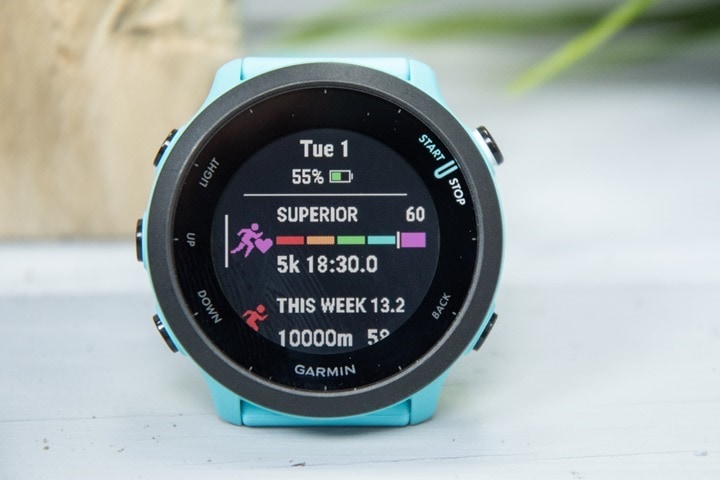
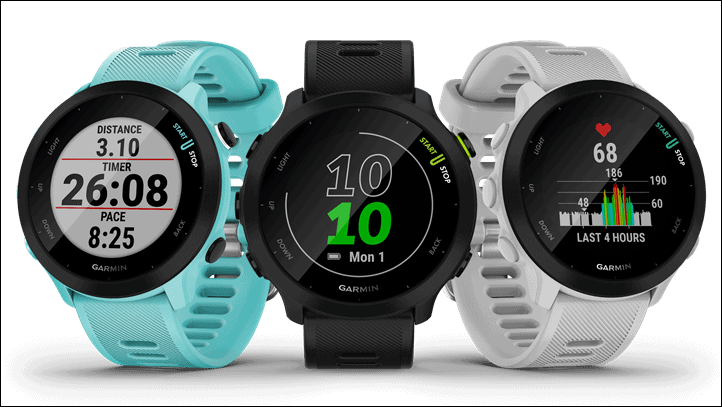
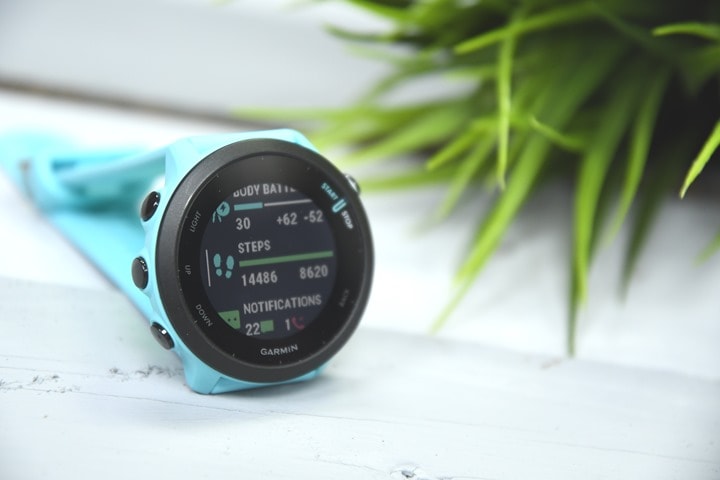
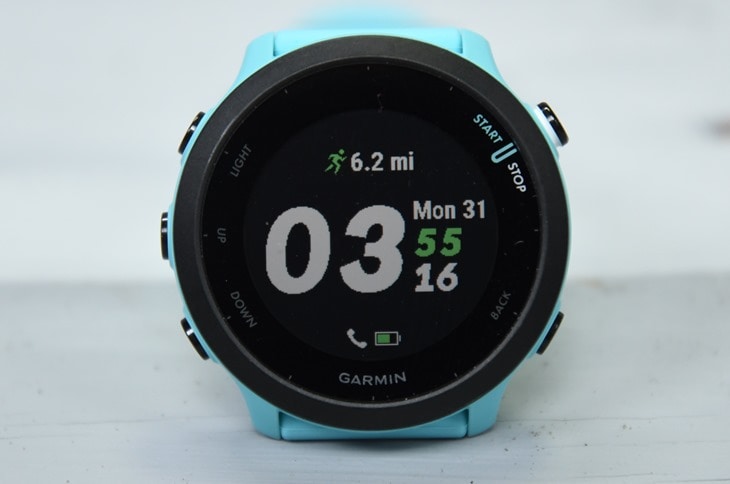
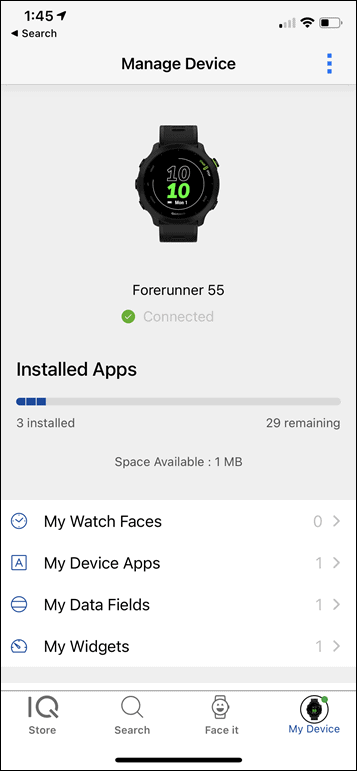
![clip_image001[4] clip_image001[4]](https://media.dcrainmaker.com/images/2021/06/clip_image0014_thumb-1.png)
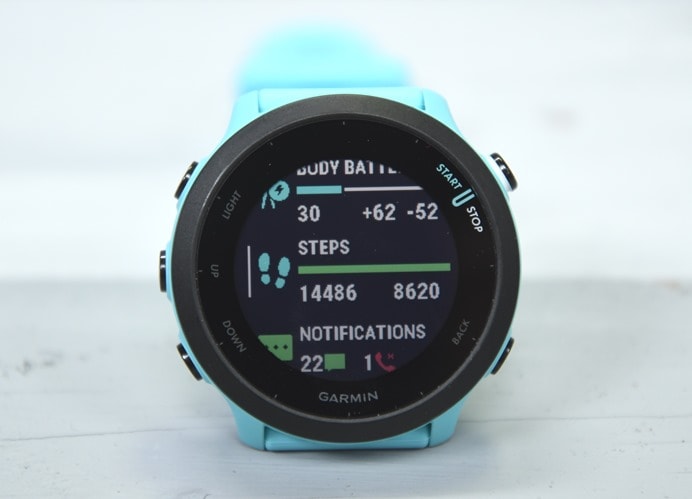

![clip_image001[8] clip_image001[8]](https://media.dcrainmaker.com/images/2021/06/clip_image0018_thumb-1.png)
![clip_image001[10] clip_image001[10]](https://media.dcrainmaker.com/images/2021/06/clip_image00110_thumb.png)
![clip_image001[12] clip_image001[12]](https://media.dcrainmaker.com/images/2021/06/clip_image00112_thumb.png)
![clip_image001[14] clip_image001[14]](https://media.dcrainmaker.com/images/2021/06/clip_image00114_thumb.png)
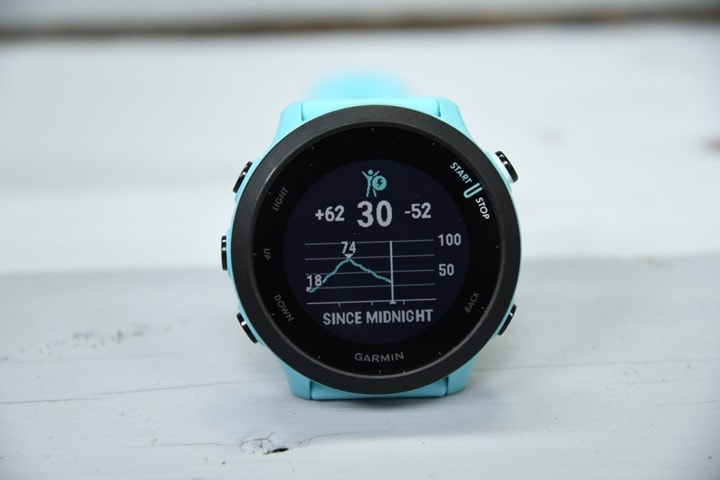
![clip_image001[16] clip_image001[16]](https://media.dcrainmaker.com/images/2021/06/clip_image00116_thumb.png)
![clip_image001[18] clip_image001[18]](https://media.dcrainmaker.com/images/2021/06/clip_image00118_thumb.png)
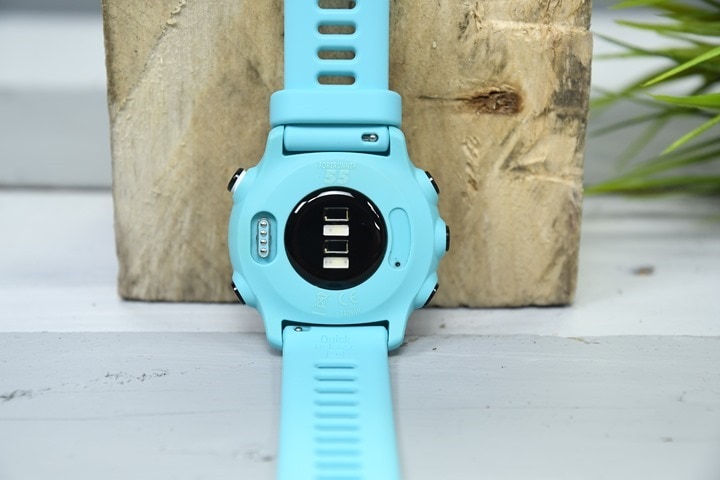
![clip_image001[20] clip_image001[20]](https://media.dcrainmaker.com/images/2021/06/clip_image00120_thumb.png)
![clip_image001[22] clip_image001[22]](https://media.dcrainmaker.com/images/2021/06/clip_image00122_thumb.png)
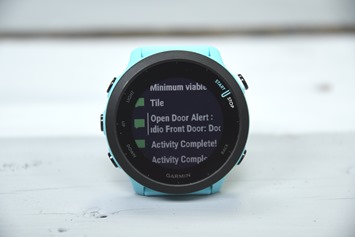
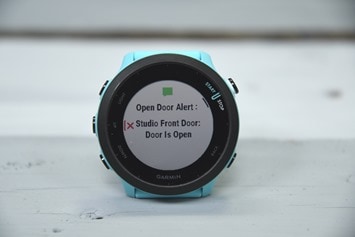
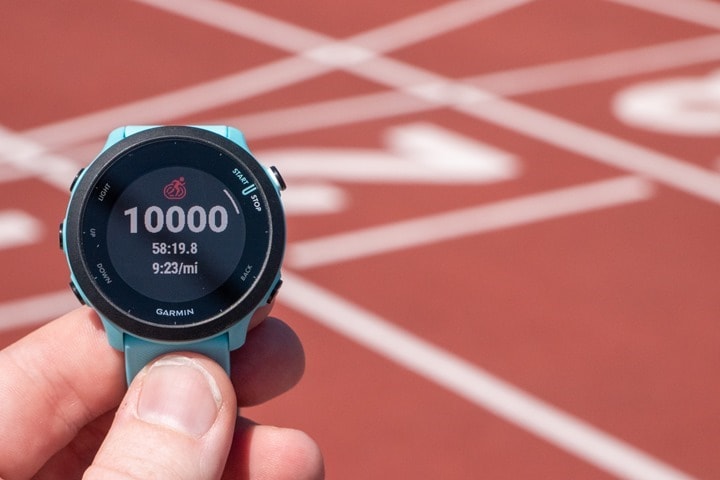

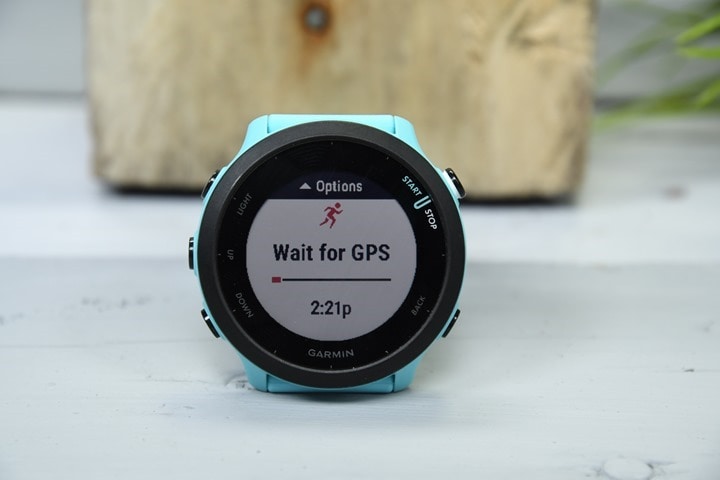
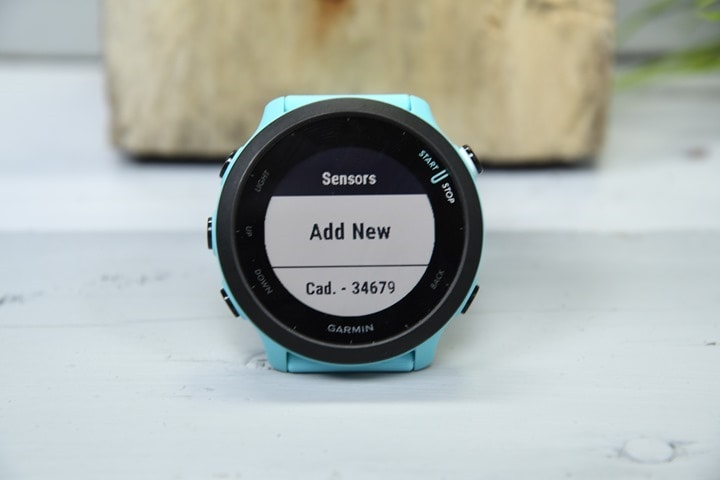
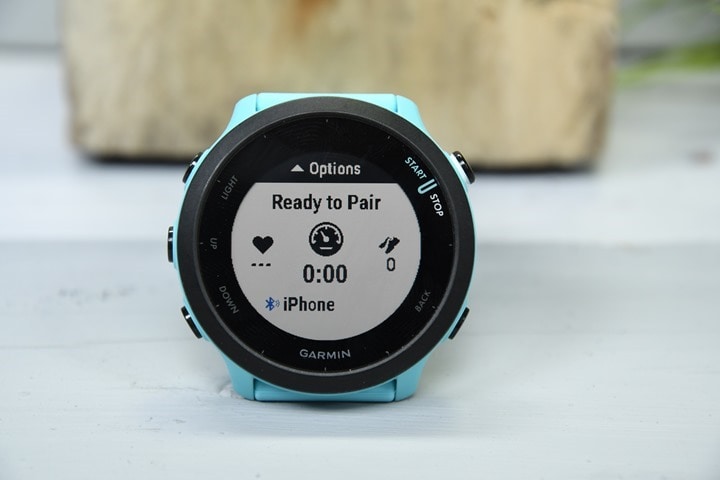
![clip_image001[26] clip_image001[26]](https://media.dcrainmaker.com/images/2021/06/clip_image00126_thumb.png)
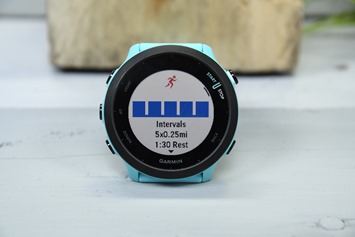

![clip_image001[28] clip_image001[28]](https://media.dcrainmaker.com/images/2021/06/clip_image00128_thumb.png)
![clip_image001[30] clip_image001[30]](https://media.dcrainmaker.com/images/2021/06/clip_image00130_thumb.png)
![clip_image001[32] clip_image001[32]](https://media.dcrainmaker.com/images/2021/06/clip_image00132_thumb.png)
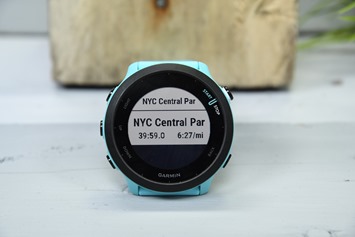
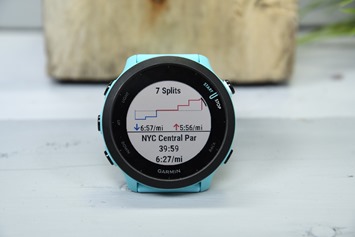
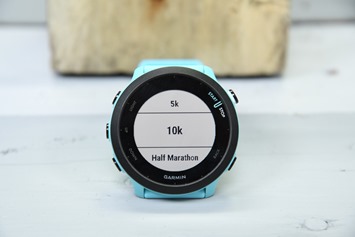
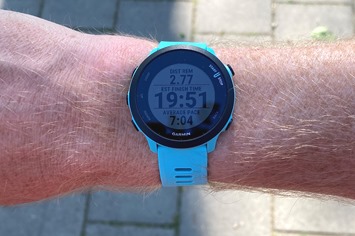
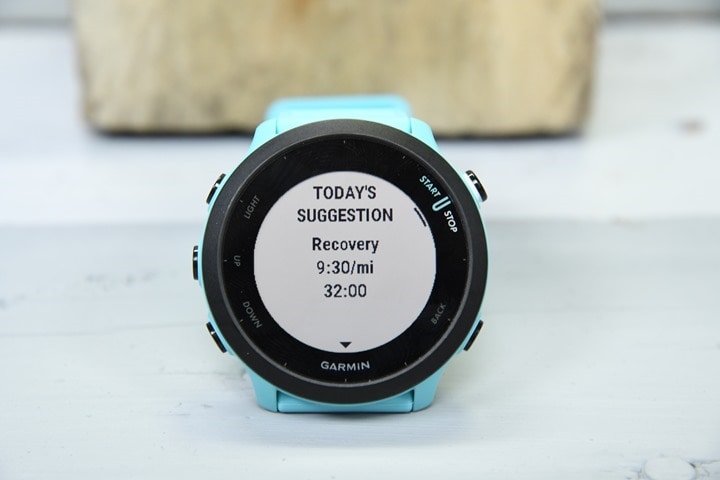
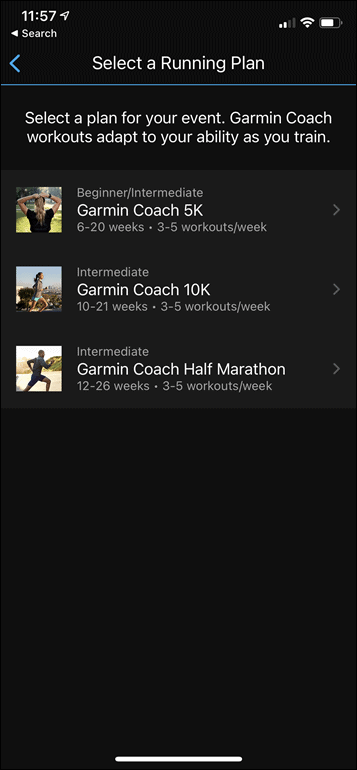
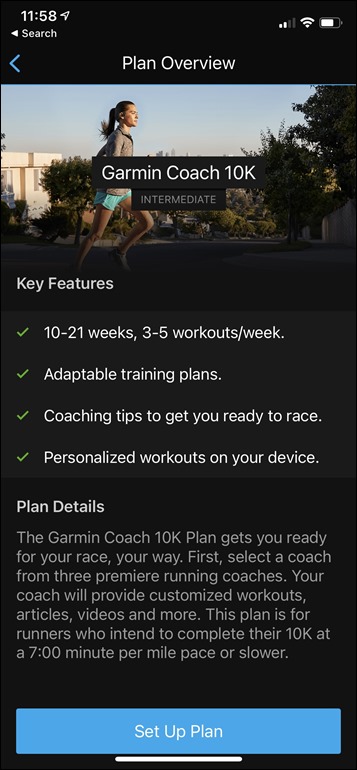
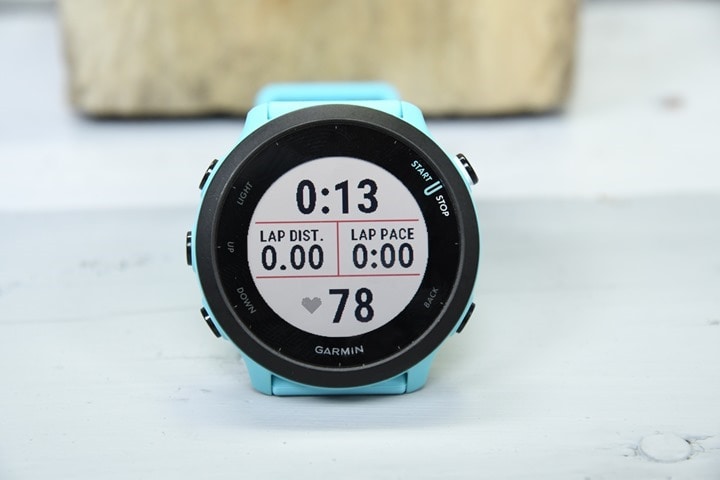




![clip_image001[24] clip_image001[24]](https://media.dcrainmaker.com/images/2021/06/clip_image00124_thumb.png)
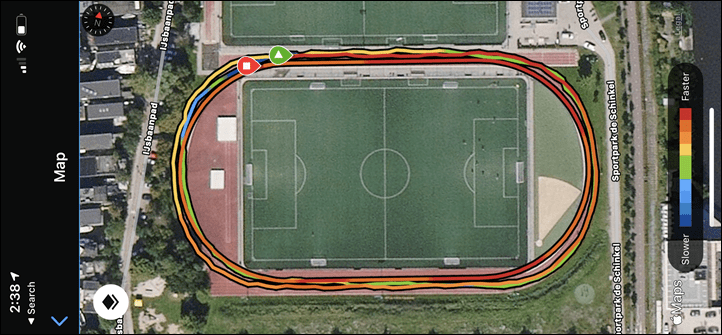
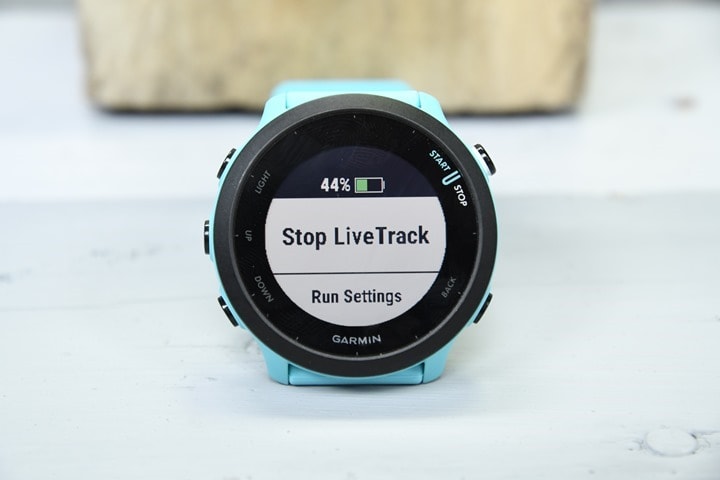
![clip_image001[11] clip_image001[11]](https://media.dcrainmaker.com/images/2021/06/clip_image00111_thumb.jpg)
![clip_image001[13] clip_image001[13]](https://media.dcrainmaker.com/images/2021/06/clip_image00113_thumb.jpg)
![clip_image001[15] clip_image001[15]](https://media.dcrainmaker.com/images/2021/06/clip_image00115_thumb.jpg)
![clip_image001[17] clip_image001[17]](https://media.dcrainmaker.com/images/2021/06/clip_image00117_thumb.jpg)
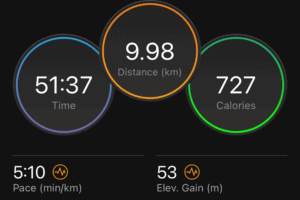
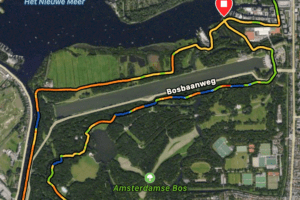
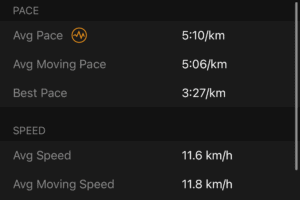
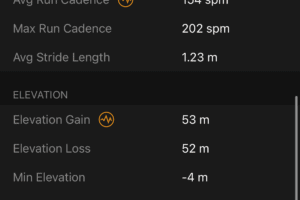
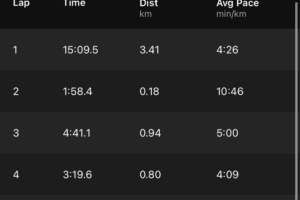
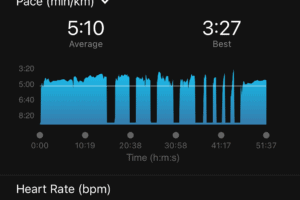

![clip_image001[19] clip_image001[19]](https://media.dcrainmaker.com/images/2021/06/clip_image00119_thumb.jpg)
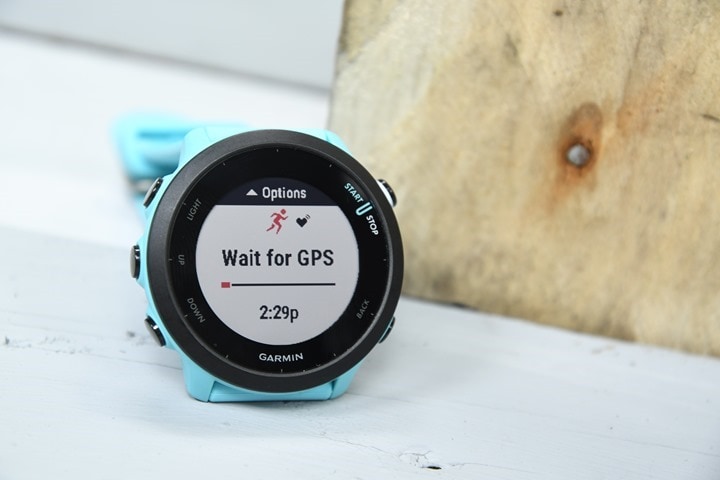
![image_thumb[1] image_thumb[1]](https://media.dcrainmaker.com/images/2021/06/image_thumb1_thumb.png)
![image_thumb[3] image_thumb[3]](https://media.dcrainmaker.com/images/2021/06/image_thumb3_thumb.png)
![image_thumb[5] image_thumb[5]](https://media.dcrainmaker.com/images/2021/06/image_thumb5_thumb.png)
![image_thumb[7] image_thumb[7]](https://media.dcrainmaker.com/images/2021/06/image_thumb7_thumb.png)
![image_thumb[9] image_thumb[9]](https://media.dcrainmaker.com/images/2021/06/image_thumb9_thumb.png)
![image_thumb[11] image_thumb[11]](https://media.dcrainmaker.com/images/2021/06/image_thumb11_thumb.png)
![image_thumb[13] image_thumb[13]](https://media.dcrainmaker.com/images/2021/06/image_thumb13_thumb.png)
![image_thumb[15] image_thumb[15]](https://media.dcrainmaker.com/images/2021/06/image_thumb15_thumb.png)
![image_thumb[17] image_thumb[17]](https://media.dcrainmaker.com/images/2021/06/image_thumb17_thumb.png)
![image_thumb[19] image_thumb[19]](https://media.dcrainmaker.com/images/2021/06/image_thumb19_thumb.png)
![image_thumb[21] image_thumb[21]](https://media.dcrainmaker.com/images/2021/06/image_thumb21_thumb.png)
![image_thumb[23] image_thumb[23]](https://media.dcrainmaker.com/images/2021/06/image_thumb23_thumb.png)
![image_thumb[25] image_thumb[25]](https://media.dcrainmaker.com/images/2021/06/image_thumb25_thumb.png)
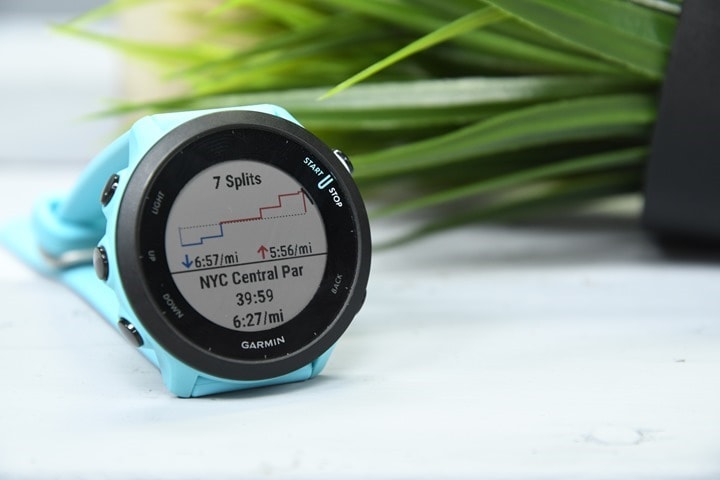

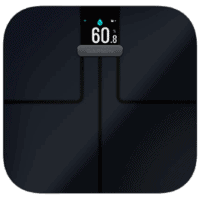
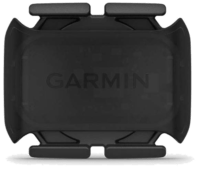
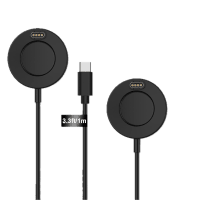
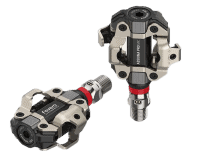
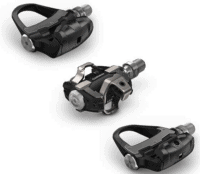
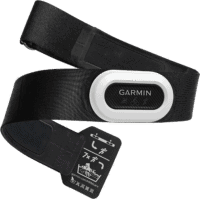
















Ouch, second post in a day that at a quick glance gave me the illusion of a 955 release (and review) :(
Are there any tips about the “Track mode” in shorter than 400m tracks? Can the garmin lovers expect to see perfect lines in 250m tracks?
maybe it’s just me, but all I’m missing is Garmin pay on this watch. I also don’t understand why they didn’t add it to this watch, in the end I suppose that Garmin has a lot to gain by getting as many users as possible on Garmin Pay. Or is it simply too expensive to add from a hardware perspective… confusing. Any insights in this would be appreciated.
I don’t get it as well. Not only will it drive adoption, they can probably get commission from it as well. Seems like Garmin loves segmentation so much that they will put segmentation over logic at times.
My thoughts exactly. And also I’m pretty curious about new features of upcoming higher end models to separate them from FR 55. For many users FR 45 already had most (or even too many) features they needed.
Same, but I think that’s Garmin’s plan, because to get Garmin Pay I’d have to buy another watch that’s basically double the price. I don’t think the NFC chip is that expensive.
Quick question: It was a bit ambiguous in the review whether it has quick GPS sync by downloading GPS position data beforehand. Does it? Thanks for the review!
Yup, all Garmin watches do that these days. Cheers!
I guess it has no built-in barometer?
Correct, none.
Is VO2 max tracking included? Perhaps a simple list of what’s missing vis a vis 245 may make decision making easier.
Yup! It’s shown in the header image, 60. :)
But I agree, a FR245 vs FR55 comparison would be great.
Are you adding the 55 to the comparison table soon, so we can save you the trouble with the comparison to 245?
And maybe the table needs some added fields, like the screen resolution thing that bothered you about the 55?
I second this request. would be awesome to see the FR245 and FR55 side by side.
Can Ray or someone confirm if the watch supports Bluetooth HR straps and Speed/cadence sensors? The review says yes but the comparison tables say no …
I was about to pull the trigger on the FR245 non-music version. With the price of the FR245 only $50 more than the FR55 would you go with the FR245 over the FR55 for the better screen resolution since they have basically the same features?
Thank you,
Troy
I think there are still some features missing, like training status/training load and maybe the new sleep metrics?
I’m in the same place. I’ve been eyeing up the 245 (and procrastinating my decision because it seems like everyone has it discounted which I assume means a new version of the 245 is on the way).
But the FR 55 looks to be about the same watch for $50 less.
Ugh.
Great question! Would also love to know thoughts on this also. To be more specific, I think I can get a FR245 for $200 i.e. same price as FR55. Should I go for the 245 or get the 55?
So would this be compatible with Komoot and the various map apps?
This is a stunning deal if CIQ compatibility means that this can do some level of mapping.
Thanks for the review! Is it possible to disable auto-save when you pause an activity? The FR45 does auto-save after 15 minutes, which is annoying when you’re stopping for a coffeebreak.
Or if it has a “resume later” like other Garmin watches… Thats’s a battery saver when you stop for a meal for example and it allows you to use the watch for other things (like seeing what time it is).
Yes, it has the all-important resume feature, I checked the manual here:
link to www8.garmin.com
no doesn’t have “resume later”, only “resume” which is basically “oops I pressed stop and want to start again’. “resume later” is a feature I use often with my 645 when we stop for a longer break when hiking or ultra running or cycling.
Does this watch yield a sleep score?
Hi Ray,
Looking to the edge side of things (i know I know this is a running product post) BUUTTTTT would you expect to see a refresh on the two wheeled world in June (530/830)?
Color coded answers accepted ;)
Green, Yellow, Red
Does the track need to be a standard 400m track or will track mode “learn” a custom track?
My local cinder track was squuzee into some leftover space in the park between road and river. It’s only 386 meters with tight turns
Now I’m waiting what they come up with on the FR245 replacement. Massive discounts on them, and mostly out of stock where I live.
Co-worker of mine pointed out that this is roughly the same price as the Coros Pace 2. Any thoughts on how they compare?
It’s a valid point, and gets into a complex area. Essentially, COROS is going to offer more features for a triathlete (like power meter support, deeper data fields, running power, altimeter) whereas Garmin offers a far better app and larger ecosystem (3rd party connections, apps, etc..).
So from a pure road runners standpoint, the FR55 gives a ton more ancillary data (all the widget type stuff). But the COROS gives more data field customization, the deeper training load bits, and running power.
Lots of tradeoffs for sure.
Platform is king and Coros doesn’t have it.
See the summary section of Ray’s APEX review from a couple of years ago:
link to dcrainmaker.com
From that:
“But I just wish the app and software matched the hardware.
I don’t feel like the new training load metrics are actually fully thought out. While one can have a discussion about preferences between Garmin/Suunto’s FirstBeat metrics and Polar’s performance metrics, you can’t really have that level of discussion with the COROS metrics. None of it really adds up the way its currently implemented, and doesn’t seem to pass the sniff test (it’s also got virtually no documentation behind it).”
I think that applies as much today as ever – Coros doesn’t live up to the hype – they’re focused on copying competitors and making the *spec sheet* look great, much like 2nd tier cell phones.
Thank you for the great review. Is it possable to upload a GPX file to the FR55, and show it? On a map or as breadcrumbs?
No course support, unfortunately.
How well do the Stryd data fields work on this watch? I’m considering updating my Forerunner 235; on that watch the Stryd power numbers are in very small type and hard to read while running when you have two or three fields on the screen.
I side-loaded an older Stryd data field and it worked just fine. They also sent me their full blown app too. Once they’ve toggled it compatible in the app store, I’ll add some more screenshots above.
Thanks. Please especially show Stryd’s power field as a part of three and four data field screens.
I traded a few emails with Stryd about the tiny type the power numbers show up in on my 235, sent them pictures, etc. They said they’d fix it, but never did.
Does this watch still have only 10 MB (*megabytes*) for storing run data etc.????
I returned the FR$5 because this appeared and the FR$5 it did not even work out of the box due to all the storage being taken up by .WebIde## folders, which I believe are for the UI code, it would not even take/start my first ever run. And now I understand the pixelation, thank you for explaining.
I currently have a FR230. This seems like a big improvement over my current watch. Would you say this is worth getting or is there word on when the new FR 255 (or whatever it is called) will be coming out? This seems like a better buy than getting a FR245.
Any thoughts would be appreciated! I love your work.
Do you recommend as an inexpensive garmin watch for someone who is a cyclist using a Garmin 1030 computer, varia radar detector tail light and tacx neo 2t? I had a galaxy watch that quit working and looking for a replacement?
So right now this is the cheapest Garmin watch compatible with Stryd?
Yup indeed (at least for a new watch). Also of note, Stryd approved the FR55 (and FR945LTE) last night so it now properly shows up as installable (and I just re-installed it ‘properly’ too).
Coros Pace 2 or this watch? Both same price….
Definitely a watch that re-energized Garmin as well. If you can do without having a website to analyse your data, Connect IQ watch faces and PacePro, it’s a better buy. Oh women might find value in Women Health Tracking?
on the FR45, the pace is always rounded to the nearest 5 seconds as you write at the track mode section. is the FR55 showing 1 second precision (when not on the track)? on the images there are only numbers divisible by 5 which doesn’t fill me with hope
I do believe that’s the case with most Garmin watches (for sure the FR230/235 is like that), but that’s for instant pace only, lap pace is to the second. Considering the volatility of instant pace, that’s quite sufficient in my view. So the typical race display of lap pace and instant pace allow pretty good pace management.
WOuld the famous charger pucks from Amazon work for this device too?
Yes, I literally have the FR55 on it right now at my desk charging up.
So you can create and send a course to the watch for PacePro, but you cannot follow it using breadcrumb trail navigation?
That v02max widget glance, is there a way to get the same on a FR245?
Ms Bluetooth HR Broadcasting, I want her as well! Ms Virtual Cycling will do as well.
Correct. Though, to be fair, I suppose the thinking is that for a race for PacePro, you ideally don’t need to use breadcrumb trail. The PacePro bit is really more about splits than courses.
Hmm, not sure on Vo2Max widget for 245. I need to update my FR245 and see if anything was part of that recent update. I charged it up this morning, so next is updating.
Yeah, I appreciate the Virtual Run profile. But at the same time, it’s like I just asked for a canoe, and I got a cruise ship instead.
there is a 4th color: Monterra Grey
link to static.garmincdn.com
I like this gray one!
But I don’t see it on the (US) Garmin page.
link to buy.garmin.com
Here’s the 55 / 245 / 745 comparison on the Garmin site:
link to buy.garmin.com
Can’t they just do it in all black?!?! Why the cheesy neon green highlights?
For interval runs, does the watch beep to tell you when to run/rest? I’m debating the 45S vs 55. Thoughts for someone who on the beginner side of things and not interested in activity tracking/general watch wearing?
Yup, the watch has a vibrating cue as well as an audio cue if you want to enable it for intervals (the 45s also has this).
I have the 45s for about a year and a half now and I’m very happy with it as a very ‘casual’ runner – you can make run programs such as 5 min warm up, 10-15 minute run with either a time or distance (or other) objectives and then add either intervals or cool down, etc. For each ‘section’ of your workout the watch will alert you.
If you think you will forever be a casual runner who just goes to run, doesn’t care too much about training, I would get the 45 if it is cheaper than the 55. If they are the same price or you expect to get more into the training side of things, rather than just tracking your runs, I would go for the 55.
Essentially now the 55 is what I wish I had for some of those additional features, whereas when I bought the 45 I felt that the 245 was too expensive for my needs.
Surely the 255 is just around the corner. It’s a no brainer to buy a 245 now when then there is the model.
Are the FR55 and FR245 identical from a hardware perspective?
They physically look the same too me apart from the a minor change to the bezel?
Can’t see why you would buy the FR55 over the FR245 Music, especially since the FR245 Music has been on sale for less than the FR55 and will probably be further discounted when the FR255 is announced?
I don’t like the screen resolution at all. This is not state of the art.
Is there a watch that has a mode for track cyclin/velodrome? There the paths sometimes look more like a Jackson Pollock painting than an oval…
Your comparison tool indicates NO for Altimeter Type. Is that correct or does it do GPS like most others that don’t have a barometric altimeter?
You reviewed the Coros Pace 2 recently. How does this 55 compare?
Ugh, the resolution of the display is such a bummer. It almost looks from your photos and videos like the font they used is Open Dyslexic. Would be a killer watch, though.
Does picture 42 show a during workout lap summary page or is that only viewable after workout is completed?
Does this have every second recording? my FR45 only has smart recording I believe which lets it down for swimming. Thanks
Yup, you can turn it to every-second. Default is smart though.
Thanks for the reviews very informative, does this watch have maps or at least a breadcrumb trail that you can load from a gps file?
No, no course support directly.
However, check out the CIQ app called dwMap, which fills that gap.
Can you Broadcast your HR to another Garmin Device such as the Garmin Edge 530?
I just hate HR Straps and i alway wear my Watch.
If this is possible i’d buy one immediatly :)
Yup, it broadcasts out over ANT+. Cheers!
Wow, a comprehensive post. I was about to grab a 245 before reading your post, which then make me rethink whether to get the fr55 or wait for the newest version of 245, presumably on the way to be launched soon (?).
Same for me? Any compelling reason to get the 55 over the 245? Does the 245 have a nicer screen? Is there any hope for a 255 anytime soon. Maybe one or the other will have a Prime Day deal?
Great review. I have an FR35 and it’s great but one annoying thing is that during programmed intervals on an outdoor run I can’t see my heartrate and the data fields seem fixed. It would be good to see how close to max HR I’m pushing on 1km intervals etc. Would I be able to see HR with this watch as I’d like to upgrade? I usually wear a HR strap. Thanks.
I am having doubts between Forerunner 55 and Venu SQ ( with or without Music?) – which one would you recommend between those options, and why?
Any feedback is welcomed! Thanks!
Thank you for this amazing review! My aqua 235 just died (rest in peace, buddy!) and I was going to just get a basic 245 to replace it, but this review sure makes a compelling case for 55. Does the 55 have run/walk alerts? Other than the less impressive screen, are there any warnings you would have for a five-year 235 user moving down to this watch? I’m just an average recreational runner, but I loved my 235.
You mentioned the pacing in track mode automatically showing :00 / :05 and not in between paces. Do you know if this is the same in the normal run mode? I currently have the FR45 and don’t like that it only shows rounded paces. I’m trying to pace a friend for a race and find it annoying. Curious if this would be a better option or if a bigger upgrade would be needed to get this functionality.
Great review as always. I was curious if anyone has tried the Forerunner 55 for swimming? I run mostly but my garmin swim is showing it’s age and I was looking for a replacement that could combine both running and swimming and not spend over $250
I have used my 55 for a few pool swims and it worked great. It correctly counted the number of laps and recognized the change in strokes between down and back. I usually do backstroke down and it got that. I usually do a side stroke back and it called that a breast stroke but at least it knew it was a different stroke. Heart rate was spot on. The only issue I’ve had, and it’s no big deal to me, is that some of the turnarounds were picked up as pauses. That may be on me for the way I turn. I’m primarily a runner but do enough in the pool that I was looking for something that would include that. So far, I’m very pleased with my purchase. BTW, for any members of AARP, you can get a coupon with your reward points for a 20% discount which made it a no brainer for me.
Wow, I was ready to buy the FR245 but this has so many of the features I want, I now have to agonize over whether the extra sensors and the back to start function will be worth the price difference. I think your comments on the display size and quality have tipped me back to to the more expensive one.
I’ve been buying used 305s on eBay to postpone this inevitable day. I feel like I’m betraying them and their stupid stupid connectors.
I’m guessing the Forerunner 245 price cut come after this review was published. As it stands today, to save £20 over the 245 (on list prices), buying a 55 loses you:
* longer GPS tracking time
* a better display (30mm 240x240px vs 26mm 208x208px)
* PulseOx
* Training Status
* Training Load
* Training Effect (Aerobic and Anaerobic)
* Breadcrumb trail navigation
* % of Max HR, % HRR
I’m a massive fan of the FirstBeat stuff (TS, TL, TE); whether you’re “serious” or not, having those numbers pop and letting you know that was a good workout (or maybe a bit too easy!) is a great motivator.
Don’t buy the Forerunner 55 if you are into heart rate training. The Forerunner 55 doesn’t show your heart rate on-screen while tracking is in progress, so you won’t be able to check your heart rate zone during a workout. You can resolve this by downloading a third-party face, but these don’t typically look very appealing. IS THIS INFORMATION CREDIBLE? CAN I DISPLAY HR, SPLIT TIME AND PACE DURING RUN?
I don’t know where the person who posted the “Don’t buy” got their information. Either I’m missing their point or the information is not credible. I’ve had the FR 55 for about a month and heart rate, pace and split times (lap times) and much more are all available during a run. The FR 55 has most of the standard data fields the the FR series has had for years. It’s just a matter of configuring the data screens for the fields that you wish to see. I’ve had mine long enough that I don’t remember for sure but I think I’m still using the default screens/fields and HR, split time, and pace are all on my screens.
Thank you Alan for your reply. I am a little bit mixed up. I did not own a garmin before so this will be my first watch. The above statement was from a review for the watch. I posted the same question to amazon and got this reply: “You are correct that natively it does not do this as a viewable screen to the user. However, you can download an app that shows HR real time and have the workout running in back ground.” I still do not understand what do they mean when they say: doesn’t show your heart rate on-screen while tracking is in progress.
I can only guess they are wanting to see HR as a part of a watch face. There is are built-in watch faces that show HR in real time when no activity is in progress. The built-in watch face during an activity has no data related to the activity. However, the watch face is only one of multiple screens that are available during an activity. Each activity type (run, ride, swim, etc.) has a set of data screens that are accessible during the respective activity. In the settings, you choose what data fields you want to see on those screens (and even how many of those screens you see). There’s a list of about 20 or more data fields from which to choose. Then, during the activity, you simply press a button to scroll through the data screens (or there’s even a setting to automatically scroll through them). I dare say that most people have a favorite data screen that they leave it on most of the time during an activity and populate it with their favorite data fields. I know when I run, my primary data screen has duration, distance and pace. But I have three other screens configured that I can scroll to when I want. One of those is just the watch face so I can see what time it is. Another screen has heart rate and zone. If you are training based on HR, you’d probably just leave it on that screen most of the time.
Do you will use this the FR for swimn or what garmin do you use ?
Hi!
Ray thanks for the great review (as usual).
Is it normal that my forerunner 55 shows Lap Pace data field in 5 seconds increments? So I see 4:05, 4:10, 4:15 and so on but never 4:02 or 4:11.
I can expect that for instant pace but seems weird for the Lap Pace. I can only see the real Lap Pace in the Lap pop-up at the end of every lap.
Should I go for the FR645 or get the FR55, in the same price?
Hi,
How do the Forerunner 55 compare to the Forerunner 45 Plus? I can’t find any mention of a Forerunner 45 Plus anywhere on the whole DCR site, even though it launched in mid 2020…
I know the FR 45 Plus has some features the 45 doesn’t, like the Race Time Prediction (from the FR 45/45 Plus user manual at garmin.com).
Regards,
Audun
Great post! I am planning on replacing my Vivoactive3 because i really only use it for running and xc skiing in winter. I don’t use the pay, text, music features of the vivoactive but i do use the fitness tracking and the sport apps. The FR55 looks like a very good candidate for me.
Two questions: does the FR55 track elevation gains while running?
And is there a sport function for xc skiing? If not, is it possible to add one?
Thanks very much!
I’m in the same boat, looking to replace my beat up Vivocative 3. If you haven’t bought yet…
The FR 55 does not have a barometric altimeter, so it won’t give accurate elevations. That said, my Vivoactive 3, even with the barometric altimeter) has never been very accurate either (I import my data into Sporttracks and get the more accurate elevation overlay in the app).
I think you’ll be happier with the Vivoactive 4 instead, currently on sale for Black Friday. Hopefully the altimeter is better than the 3.
Through my health insurance, I can get the 45 for $129.99 and 55 for $159.99. Do you think that 55 is worth 25% more?
You wrote that it wouldn’t be as great for cycling. As someone who just wants to track the occassional cycling (vs getting a lot of data or train), can I run a cycling profile?
Thanks for a great review as always!
Thanks Ray (and Des for that matter as well) for having this kind of well thought information available. I was on the fence of buying a dedicated watch for running and was really doubting between a Fenix 6S PRO on discount, awaiting for a possible Fenix 7 or taking f.e. a FR745.
Anyway… After looking at these reviews I was a bit intrigued by this simple Garmin… Too be honest it has al the features I need so why take another version that has a boatload of features that I do not use right? Next to that for me it is running only since I use an Edge for cycling and I do not wear my sportswatch casually…
So long story short I’ve ignored the “inner geek” and purchased this FR55 as a simpel and straightforward running watch. Curious to see whether it was the right call… Thanks anyway!
Small service announcement as a follow-up on my previous post… Received the FR55 and upon arrival I’ve immediately concluded that the screen size and quality was a bit more disappointing then expected. Decided to return and purchased a FR745 instead… This one fits the brief perfectly so happy runner again. In true DCR style I’ve unboxed while eating Oreo’s.
Just came here to say that this post could have been an immense amount of work to create. Highly appreciated, really good one!
Hey Ray,
Can we push structured swim workouts from the phone app to the FR55? Thanks 🏊♂️🚴♂️🏃♂️
Have you tried looking at how well optical heart rate sensors work without gps or accelerometer data? I noticed (with a different optical heart rate watch – the mobvoi ticwatch) that it did poorly measuring heart rate of HIIT workouts or workouts on a dumb cycle trainer.
I could trick the watch and get it to display a heart rate of 200 by quickly moving my arm up and down, without expending much effort (heart rate was actually ~120).
It would be interesting to see a “pure” test of the optical heart rate monitor by doing intervals on an unlinked indoor cycle trainer, with different heart rate monitors compared. That way the software can’t “cheat” and guess your heart rate based off acceleration / speed
Thanks for great review. I’m using forerunner 245 music and waiting for 255. Hope to see your review for 255 soon.
BTW,
Is it okay to translate your review in Korean and share with Korean runners?
About the training status; it is already explained that this watch does not show training status. My question is, is the training status available on the Garmin Connect app? Or is it even not shown there for the activities recorded with this watch?
Is it possible to synchronize workout from TrainingPeaks and follow the on the watch ? E.g structured Workouts ?
I’d like to know this too.
hey just a question does the watch (inside the garmin connect app or in a widget on the watch) proved a daily readiness score? because I was thinking of getting the vivosmart 5 but don’t want to carry my phone with me to track gps so looked into this, just wondering if it provides daily readiness score.
It does not.
Thanks for the great review!
I am a mixed runner / pool swimmer and I was wondering if the pool swimming app in this watch is exactly the same as the one in the Garmin Swim 2. If not, what is the FR55 missing? Thanks!
Is this screenshot from iOS or Android?
link to media.dcrainmaker.com
Because my Android Garmin Connect doesn’t have “Respiration” or “Pulse Ox”. Respiration is available in Garmin Connect Web though.
Hello, a quick question: this watch can track all kinds of different activities, but I can’t create a workout for most of them (for example, eliptical), only for running and biking pretty much. On my old FR235 I used the “Other” as a catch-all for non-running activites (I don’t bike), but I can’t even sync those workouts to my FR55.
In short: I can make an eliptical workout on Garmin connect. But when I try to sync it to my FR55, it shows as incompatible. I can record an eliptical activity on the watch just fine. On my next watch, I’d like to be able to sync it, and I’m not sure what information to look for beforehand?
I’ve been using the FR55 for about 2 months. The features seem pretty good for road and gym running. Not great for trail but the GPS accuracy seemed decent in the woods.
The crystal cracked on a barely noticeable bump and relegated to watch to the bin. Durability is obviously a concern and would deter me from buying has a known that.
I purchased an FR55 recently and I am loving it. One thing that I did not realize before buying was that it won’t work with the Garmin RD pod. Is there any workaround for that?
The watch says it supports sunrise/sunset but I don’t see any such widget or information avaliable?
Is there any plan for Garmin to release an S version of this like with the 45?
Great review Thanks! One question. How to add to FR 55 additional activity (XC skiing) as not listed in options. Thx a lot for support and advice.
Martin
Late to the party here, totally confused for a watch that will record swimming. My younger child swims in a club, so I’m looking at a watch to give some stats. Laps, speed, distance etc. i love my Forerunner 35 for running so nothing too fancy required I don’t think! Garmin are familiar, but all brands are pretty pricey. I read that the Forerunner 55 is a basic choice for swimming, but is it actually too basic? Would a Swim 2 be more worth it in the long run? It’s newer of course, and I do prefer the look over the old Swim, but the 55 has better battery. Anything better than a Garmin Swim 2?
Would i be able to upload to strava the powermeter data?
And if indoors, can you have a page that has cadence, power, speed, hr?
Hi DC Rainmaker,
I have bought a ForeRunner 55 for my wife. This year we found that in some cases the ForeRunner 55 distance is totally wrong. The ForeRunner 55 indicated 7,27km which we then also saw in GarminConnect and in Strava. But when I export the GPX of that activity and import it as a course it shows the true distance of 11km. And in another case it the ForeRunner 55 indicated distance as 6,07km which we then also saw in GarminConnect and in Strava. But when I export the GPX of that activity and import it as a course it shows the true distance of
8,2km. I have reported this to Garmin support and after 2 months they answer: “This is then programmed into Garmin Connect based on data from the file and other calculations that are made.”
I am disappointed that Garmin is not interested in what causes this huge mismatch and I hope you have better ways to get a better answer form Garmin. I hope you are interested and hence also willing to help me to get clear what causes this mismatch. The ForeRunner 55 runs on the latest software available: 8.02.
I purchased this forerunner 55 a couple of months ago, and so far I like it. Don’t know about anyone else, but the heart rate display during a watch training session is very readable to me. The time hands face is legible to me as well. Garmin if you’re reading this, I would MUCH RATHER have a watch that stays charged for 6 days then have a Apple display which is all bright and shiny but have to charge it every day, so please keep this display for me. I will gladly give up a couple of pixels for much longer battery life.
At first I paired this watch with my Polar heart strap for mountain bike riding and had the watch on the handlebars. Then one day I just kept the watch on my wrist and occasionally tilted my arm to see it and didn’t wear the strap. The optical heart rate sensor seems to do well enough most of the time. I’ve gotten used to doing this now and chucked the strap (transmitter doesn’t work anymore anyways), one less thing to keep track of.
I’m not a fan of having to wait for the GPS to sync at training start, so I just skip it and start the training session anyways. I can edit the erroneous initial GPS reports in the app if I want to.
Overall watch functions are pretty basic, but all I want to do is monitor my heart rate and see where I’ve been after a session, and so this watch is perfect for me.
Could this be Garmin’s longest running model so far? It’s still available new far into 2024. I wonder when we’ll see an updated version? Or is the 165 the successor, but at a higher price point?
On the Garmin website when comparing watch models (like the 55 to the 165 or 265), it says that the 55 comes with ‘limited’ suggested workouts compared to the others, which it says has ‘7 days’ of suggested workouts. Does this just mean they all have the same quality of recommendation for running workouts, but you can see ahead more on the 165 and 265 models?
Hmm, I’d need to dig one up and check, but one thing that might be the reason for that wording is that the FR55 doesn’t have bike suggested workouts, since it doesn’t have a power meter (which is required for bike daily suggested workouts).
A friend of mine recently upgraded from the 55 to 255. I think the difference is that he can now see the DSW in advance for the week. The workouts are also different (harder for him) than what the 55 suggested. From Garmin’s site it says the DSW in calculated on the watch, so there will probably be some variation between models.
One small missing feature on the Forerunner 55 is a “Resume Later” option at the end of a run. You either have Save or Delete. Not a biggie but it does come in handy when I need to stop a run for a period of time then want to go back. Now I have to Save the run and start a new run later or just keep the watch on run mode (but stopped) until I go again.